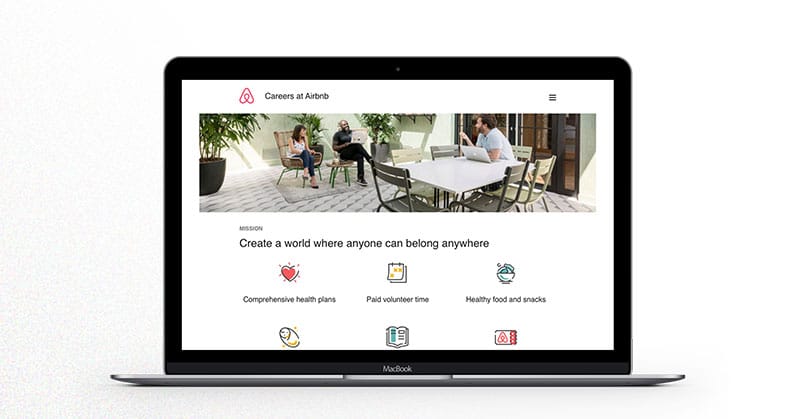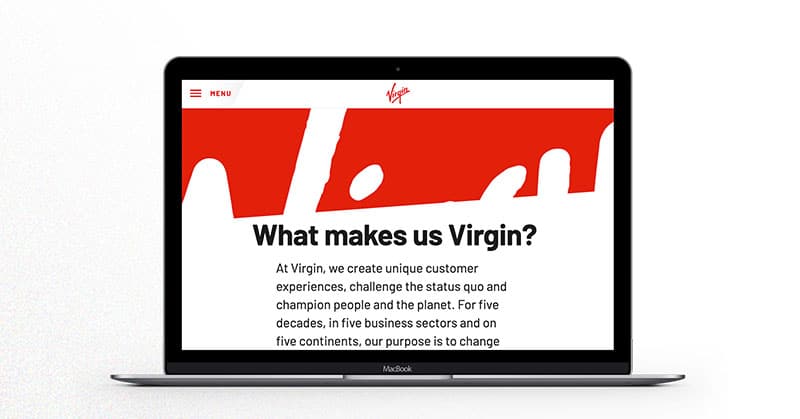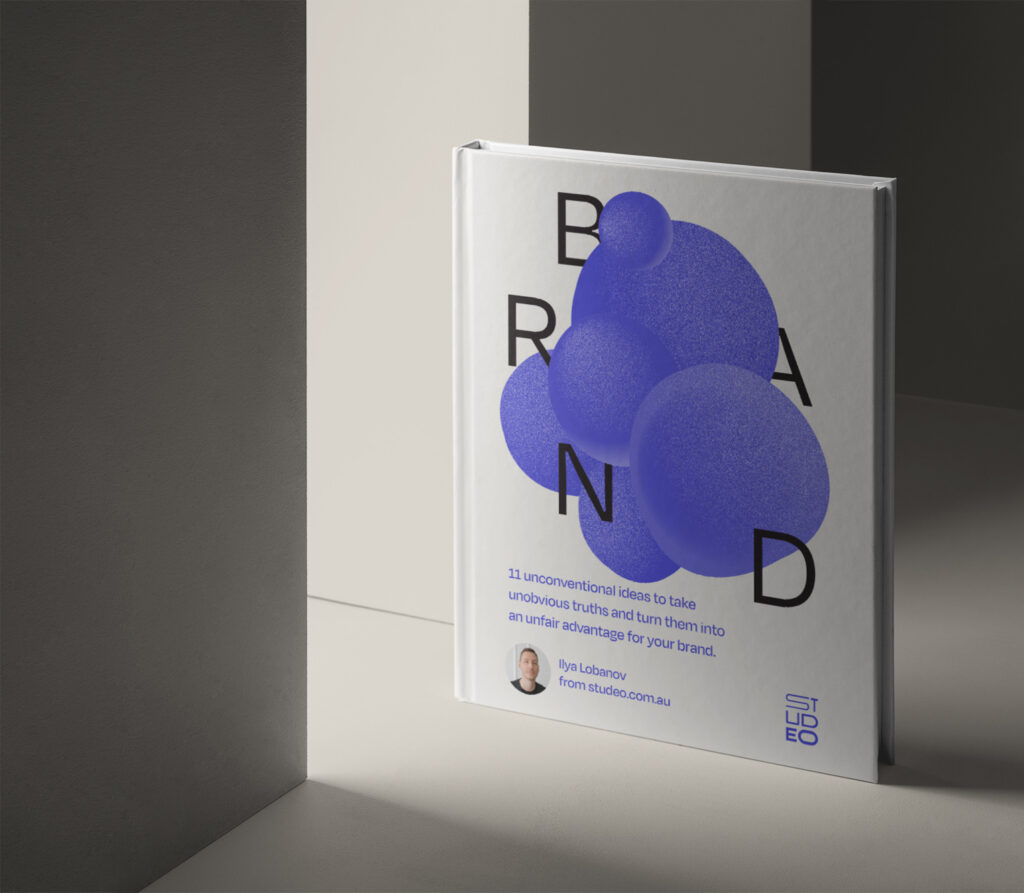Adopt Brand Strategy for the Right Reasons

The biggest lesson I’ve learnt in my eighteen years in the industry is that design is not art. This simple belief can sometimes be overlooked, forgotten, and ignored.
Design needs to help solve a particular problem – usually a business one. And we need to become more aware and considerate about that. Brand Strategy is one way how we can marry design and business results more efficiently.
If, as a designer you had a client dismiss your perfect design concept and told you to start again – you may have just met a client from hell. And if, as a client, you needed to ask the designer you’ve hired for half a dozen revisions to something as simple as a business card – you may have hired an incompetent mac operator.
Or, in both cases, it could mean you need to adopt a more strategic approach.
But first, a quick story about how I got started in the world of strategic brand design.
Seeing the big picture
I consider myself to be an average designer but an above-average strategic and creative thinker. And although I’ve always loved the practice of design, I’ve also tended to lean more on my ability to think strategically.
Pretty much since I started designing my first logos in the early noughties, I was asking clients deeper questions. I wanted their logo to embody their brand and their unique personality. I asked them how they would want their customers to describe their business if it were a person. And what popular movie character it would be.
Somehow I intuitively understood that people connect better with other people than they can connect to a business. So if we manage to personify a brand, perhaps we can make it easier to attract more customers.
I tried to apply this type of strategic thinking to any design project. Whether it was a logo, a piece of animation, a poster, or a website.
The full circle of branding
After my initial several years as a freelance designer, creating logos and later print labels, I spent almost 10 years creating and designing online experiences. I remember passionately arguing with clients about needing to communicate the true essence of their brand, even if they told me they ‘just wanted a website’.
Even so, there were still many cases where I’d let my guard down and let clients art-direct me on what colours or fonts to choose. Often without any rational explanation.
And that’s when, after I transitioned to a full-service agency, I started to fully understand the massive role branding plays in every aspect of a business, and how it can impact design and marketing decisions. I also started to understand the implications of not having a clear Brand Strategy.
This wasn’t the case 20–30 years ago though. Back then businesses relied on the ‘build it and they will come’ mentality. But in his book, The Brand Flip, Marty Neumeier talks about how the power has shifted from businesses that transmit messages to the masses to now customers having the power to shape brands.
So how does Brand Strategy fit into all of this?
Brand Strategy has become an industry buzzword, with every other freelancing designer and agency hopping on the $10K Strategy Train. And often for the wrong reasons.
Usually, it’s because of the irresistible promise of higher paychecks compared to your ordinary logo design projects. And often it’s without understanding the mindset shift that needs to happen.
In reality, Brand Strategy means taking off the ‘design something pretty’ hat and putting on a ‘let’s look at the big picture of a business’ hat. Questions such as ‘What does the business do and why’, ‘What makes the business different’, and ‘What would compel customers to choose your product over another‘ are the bedrock of strategic thinking.
Branding is not just about the logo, or the website. It’s every single touchpoint that exists for a business. It’s even the individual perceptions that customers form about a business based on those touchpoints, including their customer service interactions, the company’s reviews and so much more.
What we can do as brand builders then is start to shape those perceptions and try better align to the customer needs through Brand Strategy.
How can you start implementing a Brand Strategy?
One of the superpowers of a strategic brand process is that you start wanting to uncover the real problem by challenging assumptions. So when a client requests a logo or a website, your first natural response becomes trying to understand why the client feels it will solve their business challenge.
- Do you have specific goals you hope this will accomplish for your business?
- Tell me about your vision for this project and your business in general?
- What target audience are we speaking to and what problem will we help them solve?
- What do our customers value and what other factors drive their purchasing decisions?
- What do you want this deliverable to communicate to the customer?
- How will we define and measure success for this project?
Think about a trip to the doctor or a dentist for a moment. They quiz you about your problem, investigating the symptoms, possible causes, and other details, to try and understand how to best help you. Because of this curious investigation, we start to feel they are better placed to solve our unique problem, rather than treating everyone and everything with a Panadol.
Of course, Brand Strategy is more than these questions. But even these initial conversations begin raising the trust between client and designer. They also open up a larger conversation about the need for a more strategic approach. And the need to think deeper about such important brand pillars as Brand Values, Brand Personality, Customer Needs, and solid Brand Positioning.
All of these distilled brand components will act as a North Star, a guiding beacon driving the direction of every future branding activity and making the design decisions and validation of every visual component easy both for the designer and the client.
Practical applications of Brand Strategy
With a solid Brand Strategy in place, it can feel like you’ve just drawn the perfect roadmap of the hidden treasure with exact steps on how to get there. Or holding up a bulls-eye target that both parties know when is hit, rather than trying to aim at something in the dark.
Design revisions either evaporate or become tiny in comparison to working without a strategy.
Once you have a clear road map, a confirmed strategic direction for a brand, you can start thinking about the visual deliverables. Logo, website, business cards, and other stationery and promo items.
Every single deliverable we create from there on will be validated and every design decision will be guided by the strategy. These become less about the subjective opinion on the designs and more about whether they align to and communicate the Brand Story we want our brand and visuals to tell.
Bringing it all together in deliverables
For added context and practical examples, let’s think about how Brand Strategy might help us with design decisions for a website.

Slack’s key brand values are Empathy and Playfulness, and you can see how they express that through their playful and vibrant colour scheme and their inclusive and engaging images. Next time you’re picking out a colour scheme or an image style, ask yourself whether your colour choice and image selection aligns with your core brand values.

Airbnb does a great job connecting to the Customer Needs of belonging and community, by using inclusive, inspiring language and the way they choose their imagery and illustrations. Their icons are friendly, inviting, and project a feeling of warmth and belonging. Airbnb carefully considers every communication and element of their website to make sure it communicates in a way that will resonate with their customers.

Virgin better than most knows how to showcase its personality in a way that is relatable to its target audience. It aligns with the ideal customers who are driven modern and energetic by projecting that back through their vibrant and bold personality, fonts, and language. When thinking about the layout, contrast, font choices, and more, you can reflect on whether they communicate the brand persona you’ve defined.
Remember, you don’t need to be a ‘Brand Strategist’ to be able to approach design more strategically. Whether you adopt Brand Strategy fully or simply start asking better questions, it will inevitably lead you to produce better, more relevant, and valued work.
Now Over To You
If you enjoyed reading this article, consider signing up for the Studeo Insider, and receive more insights like this one. If you know someone who might enjoy this article, please share it. If you have any questions or would like a chat, please reach out via email or on Instagram, I’d love to hear from you!
